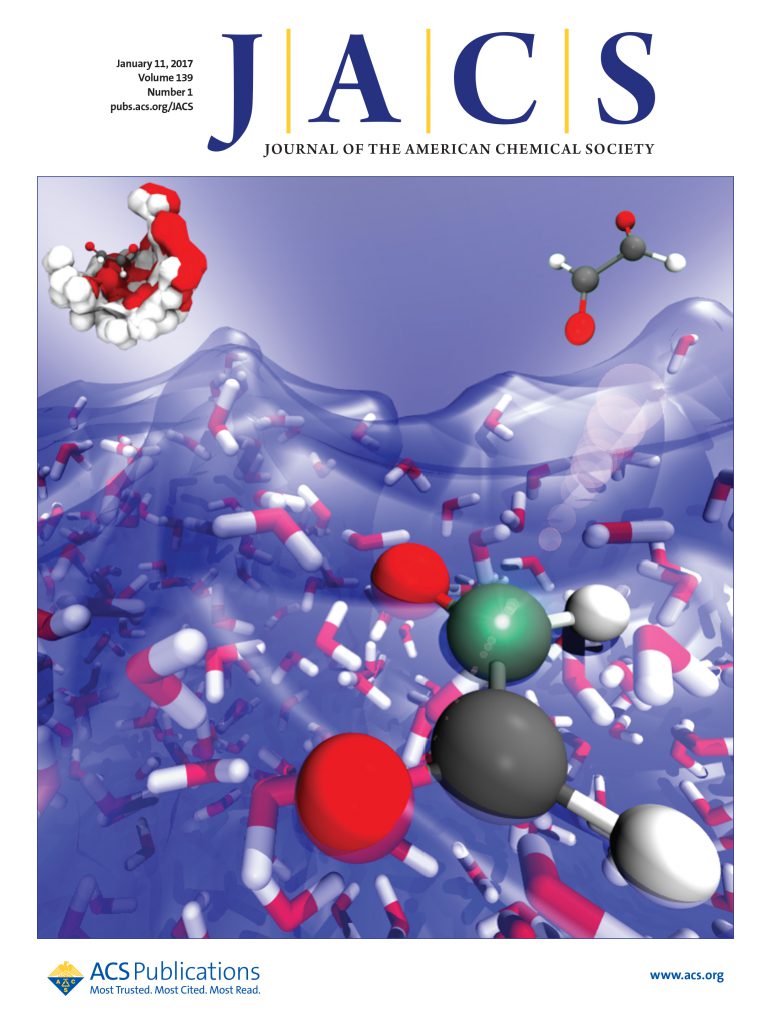利用酶发现与工程技术合成植物螺霉吲哚类生物碱
IF 14.4
1区 化学
Q1 CHEMISTRY, MULTIDISCIPLINARY
引用次数: 0
摘要
集体合成是一种完善的策略,从共同的中间体生产天然产物集合。将这一概念扩展到酶系统,集体生物合成为多种分子集合提供了一种可持续的方法,但面临着明显的挑战,包括不完整的途径知识和生物合成酶的底物特异性狭窄。在这里,我们通过酶发现和蛋白质工程克服了这些限制,实现了螺旋体吲哚生物碱的集体生物合成,这是一类具有多种生物活性的重要天然产物。我们确定了催化酶外聚体化的两个关键酶,并与先前发现的细胞色素P450酶先后工作,以充分阐明五环螺烷吲哚生物碱的生物合成途径。结构导向工程增强了底物识别能力,使12个四环和五环螺恶哚天然产物的集体生物合成成为可能。我们还通过前体定向生物合成产生了新的天然氟化和氘化衍生物。这项工作为植物螺旋体吲哚生物碱的生物合成提供了重要的见解,同时为复杂天然产物的可持续生产建立了强有力的方法。本文章由计算机程序翻译,如有差异,请以英文原文为准。
Collective Biosynthesis of Plant Spirooxindole Alkaloids through Enzyme Discovery and Engineering
Collective synthesis is a well-established strategy to produce natural product collections from common intermediates. Extending this concept to enzymatic systems, collective biosynthesis offers a sustainable approach to diverse molecular collections but faces distinct challenges, including incomplete pathway knowledge and narrow substrate specificity of biosynthetic enzymes. Here, we overcome these limitations through enzyme discovery and protein engineering to achieve collective biosynthesis of spirooxindole alkaloids, an important class of natural products with diverse biological activities. We identified two key enzymes that catalyze enzymatic epimerization, working sequentially with a previously discovered cytochrome P450 enzyme to fully elucidate the biosynthetic pathway of pentacyclic spirooxindole alkaloids. Structure-guided engineering enhanced substrate recognition capability, enabling collective biosynthesis of 12 tetracyclic and pentacyclic spirooxindole natural products. We also generated new-to-nature fluorinated and deuterated derivatives through precursor-directed biosynthesis. This work provides crucial insights into plant spirooxindole alkaloid biosynthesis while establishing a powerful approach for sustainable production of complex natural products.
求助全文
通过发布文献求助,成功后即可免费获取论文全文。
去求助
来源期刊
CiteScore
24.40
自引率
6.00%
发文量
2398
审稿时长
1.6 months
期刊介绍:
The flagship journal of the American Chemical Society, known as the Journal of the American Chemical Society (JACS), has been a prestigious publication since its establishment in 1879. It holds a preeminent position in the field of chemistry and related interdisciplinary sciences. JACS is committed to disseminating cutting-edge research papers, covering a wide range of topics, and encompasses approximately 19,000 pages of Articles, Communications, and Perspectives annually. With a weekly publication frequency, JACS plays a vital role in advancing the field of chemistry by providing essential research.

 求助内容:
求助内容: 应助结果提醒方式:
应助结果提醒方式:


